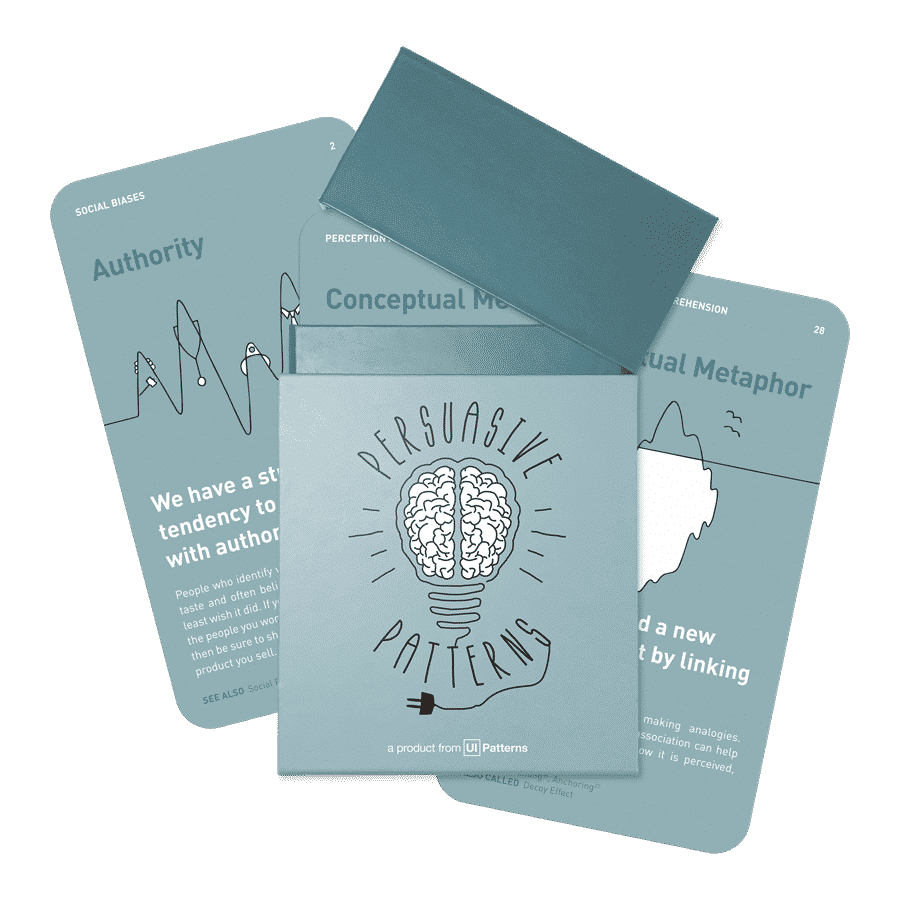Cognitive Bias
Also called: Hedonic Treadmill
This persuasive pattern is part of the Persuasive Patterns printed card deck.
The Persuasive Patterns Card Deck is a collection of 60 design patterns driven by psychology, presented in a manner easily referenced and used as a brainstorming tool.
Get your deck!Hedonic adaptation describes our tendency to adjust to both positive and negative life experiences, eventually returning to a baseline level of happiness.
Imagine moving into a beautiful new apartment with all the modern amenities you’ve ever dreamed of. Initially, you’re thrilled - the spacious layout, the sleek appliances, the stunning view - everything feels exciting and novel. However, after a few months, the initial excitement starts to fade. The newness wears off, and the apartment begins to feel like just… your apartment. This is hedonic adaptation at work. Our happiness levels, which spiked with the initial positive change (moving in), gradually return to a baseline level.
Similarly, consider a fitness app you downloaded with great enthusiasm. The initial interface is sleek, the onboarding process is engaging, and the gamified features with point systems and badges are motivating. You start using the app religiously, excited about the progress you’re making. However, after some time, the initial excitement wanes. The workouts might feel repetitive, the badges lose their novelty, and motivation starts to dwindle. This is because hedonic adaptation has set in. The initial features that grabbed your attention no longer hold the same power.
The study: Relative happiness of lottery winners over time
One of the foundational studies in the exploration of hedonic adaptation was conducted by Brickman, Coates, and Janoff-Bulman in 1978, which examined how lottery winners and paraplegics adjusted to their new life circumstances. Surprisingly, the study found that despite their altered life conditions, both groups eventually returned to their baseline levels of happiness. Lottery winners reported a significant increase in happiness immediately after winning, but within a few months, their happiness levels returned to nearly the same level they reported before winning. Similarly, those who had suffered severe accidents leading to paralysis also returned to their original happiness levels after an initial period of adjustment and despair.
Brickman, P., Coates, D., & Janoff-Bulman, R. (1978). Lottery winners and accident victims: Is happiness relative? Journal of Personality and Social Psychology, 36(8), 917-927.
Hedonic adaptation highlights our remarkable ability to adjust to various life situations, making us less sensitive to ongoing or repeated stimuli. While this resilience helps maintain emotional equilibrium, it also poses challenges in maintaining long-term satisfaction with life improvements or changes. Understanding this pattern is crucial for designing products, services, and experiences that continually engage and satisfy, preventing users from falling into complacency and disengagement.
Hedonic adaptation, also known as the hedonic treadmill, is fundamentally based on the psychological principle that individuals’ emotional responses to both positive and negative life events tend to approach a baseline level of satisfaction over time. This principle suggests that despite significant changes in one’s life circumstances, levels of happiness will eventually stabilize.
Hedonic adaptation is rooted in the concept of set points, a theoretical idea suggesting a baseline level for various psychological states, including happiness. Several psychological principles contribute to hedonic adaptation:
- Sensory adaptation
Our senses adjust to constant stimuli. Just as a strong smell eventually fades in the background, the initial excitement of a new experience can diminish as we become accustomed to it. - Psychological contrast
We evaluate experiences in relation to recent events. A promotion might feel incredible after a period of feeling undervalued, but the joy might lessen if followed by a series of further successes. This contrast effect highlights how hedonic adaptation is relative. - Cognitive reappraisal
We can reframe our experiences over time. The initial frustration of a challenging task might transform into a sense of accomplishment upon completion. This reframing allows us to adjust our emotional response and potentially reach a new happiness baseline.
Hedonic adaptation doesn’t suggest we are incapable of lasting happiness. However, it highlights the need for strategies that counter our tendency to adapt to positive experiences.
Beside the set-point theory, the phenomenon of Hedonic Adaptation is influenced by several key psychological concepts:
- Contrast Effect
Part of the reason for hedonic adaptation lies in the contrast effect, where the impact of relative differences diminishes over time. Initially, changes in circumstances provide a new point of comparison, but as individuals become accustomed to these changes, their perceived impact on well-being lessens. - Aspiration adjustment
Hedonic adaptation can also be explained by changes in aspirations. When individuals achieve a desired goal, their aspirations often adjust upwards, making it difficult to sustain increased happiness levels. Conversely, after adverse events, expectations may lower, helping individuals return to previous happiness levels despite worse conditions. - Cognitive Dissonance
This psychological concept explains how individuals rationalize experiences to align with their expectations and self-image. After a positive change, people might downplay its importance over time to align with their previous self-view, thus diminishing its impact on their overall happiness. - Attentional shift
Adaptation occurs because individuals shift their focus away from the changes brought by new events as they become more routine. The novelty wears off, and individuals start paying more attention to other aspects of their lives that remain constant, leading to a return to baseline happiness.
Designing products for Hedonic Adaptation
While initially exciting, products and experiences often lose their luster over time due to a phenomenon called hedonic adaptation. This chapter equips designers with strategies to counteract this tendency and foster long-term user satisfaction.
Hedonic adaptation refers to our natural tendency to return to a baseline level of happiness after experiencing positive events. This means the initial thrill of using a new product or service eventually fades. However, by understanding the factors influencing hedonic adaptation, we can design experiences that offer a sense of progress, surprise, challenge, and social connection – all factors that help combat this numbing effect.
Here are five key design strategies to consider:
- Support interpersonal relationships
Integrating features that connect users and foster shared experiences combats hedonic adaptation. Imagine a gardening app that encourages families to grow vegetables together. Shared activities create a stream of positive events and emotions that strengthen bonds and extend the overall user experience. - Encourage savoring
Shift the focus from novelty to appreciating the present moment. Design elements can nudge users to savor an experience. Consider a travel app that allows users to create photo albums or share trip highlights, encouraging them to reminisce and extend the positive feelings associated with the journey. - Support personal goal pursuit
Products that empower users to pursue personal goals create a sense of accomplishment and ongoing engagement. Think of a fitness app that provides personalized training schedules and celebrates milestones. The journey towards a goal, not just the achievement itself, offers a continuous stream of positive experiences. - Introduce novel and surprising elements
While familiarity breeds comfort, a touch of the unexpected can rekindle user interest. This doesn’t require constant overhauls; a surprising bonus or a limited-time event can inject novelty and rekindle user excitement. For example, a ride-sharing service might surprise users with a high-end car on occasion, creating a delightful and memorable experience. - Foster gratitude
By fostering an attitude of gratitude, users appreciate the value of what they already have. Imagine a social media platform reminding users of positive interactions with friends, prompting them to cherish their connections. This can help users appreciate experiences in the present moment and combat the tendency to chase the next big thing.
By implementing these design strategies, we can create products and experiences that offer a sense of progress, surprise, challenge, and social connection while still countering the numbing effects of hedonic adaptation and fostering a more sustainable sense of satisfaction for users in the long run.
Ethical recommendations
A primary ethical concern is the intentional design of products that exploit Hedonic Adaptation to drive continuous consumption or use, even when it may not be in the best interest of users. For example, creating a cycle of constant upgrades or new purchases that users are encouraged to make in pursuit of sustained happiness can lead to excessive spending or waste. Additionally, if not carefully managed, this could contribute to environmental degradation through increased production and disposal of goods.
Another area of concern is the potential for fostering addictive behaviors. Products designed to exploit hedonic adaptation by offering constant new stimuli or rewards might lead users to overuse these products, potentially at the cost of their social relationships, financial stability, or physical and mental health.
Also, design strategies that rely heavily on social comparison can negatively impact self-esteem. Constant exposure to others’ achievements (unfiltered or inauthentic) within a gamified system can fuel feelings of inadequacy or inadequacy.
To ensure that the application and accommodation of hedonic adaptation in product design and marketing respects user well-being, the following best practices are recommended:
- Promote genuine user value
Design products that offer true and lasting value rather than temporary satisfaction. Ensure that any updates or new features enhance the functionality and usability of the product, contributing to the user’s quality of life. - Be transparent
Be transparent about the life cycle of the product and the realistic expectations of satisfaction it can provide. Help users understand the nature of hedonic adaptation and how it might affect their satisfaction with the product over time. - Support responsible consumption
Encourage responsible consumption habits by designing products that are durable, repairable, and upgradable. Offer services that support the long-term use of products, such as repair services or software updates that extend the product’s useful life. - Encourage a healthy balance
Design products and systems that encourage a healthy balance between technology use and other life activities. Provide users with tools to manage their engagement, such as customizable notifications or features that promote digital wellness. - Educate users
Educate users about hedonic adaptation through user manuals, blogs, and direct communication. Empowering users with knowledge about how their expectations and satisfaction might change can help them make more informed decisions about their consumption patterns.
Examples
Google Doodles
Google keeps users engaged with its search engine through the use of Google Doodles, which are temporary changes to the logo on Google’s homepage to celebrate holidays, anniversaries, and the lives of famous artists, pioneers, and scientists. This element of surprise and novelty helps maintain user interest over time.
Microsoft Office 365
Microsoft has shifted from providing a one-time purchase software product to a subscription-based service, allowing for continual updates, new features, and integration with cloud services. This shift not only enhances functionality but also keeps the user experience evolving, which helps maintain user engagement and reduces the likelihood of hedonic adaptation.
Nintendo Switch
The Nintendo Switch gaming console offers a design that caters to varying gaming preferences through its hybrid model. It can be used as a home console connected to a TV and as a portable device. Its versatile design, along with the frequent release of new games and accessories, keeps the gaming experience fresh and adaptive to different contexts of use.
Trigger Questions
- How can we break down long-term goals into achievable milestones?
- Can we introduce gradual innovations to keep users engaged?
- Are we offering opportunities for users to connect and support each other?
- How can we encourage users to savor and appreciate the current experience?
- Does our design foster a sense of accomplishment and personal growth?
- Are we leveraging a variety of rewards and challenges to sustain user interest?
Pairings
Hedonic Adaptation + Social Proof
Hedonic adaptation can be countered by the influence of others. Combine it with social proof by showcasing user achievements, progress leaderboards, or positive testimonials. Imagine a fitness app (using Hedonic Adaptation) incorporates a social feed where users celebrate milestones, motivating others and reigniting their own commitment (Social Proof).

We resume stable levels of happiness despite major positive or negative events

We assume the actions of others in new or unfamiliar situations
Hedonic Adaptation + Goal-Gradient Effect
People put in more effort when nearing a goal. Pair Hedonic Adaptation with the goal-gradient effect by highlighting progress visually and emphasizing the rewards closer to achieving milestones. For example a language learning app (using Hedonic Adaptation) displays a progress bar that fills in with each completed lesson. As users approach the completion of a unit, the bar fills up faster, creating a sense of urgency and accomplishment (Goal-Gradient Effect).

We resume stable levels of happiness despite major positive or negative events
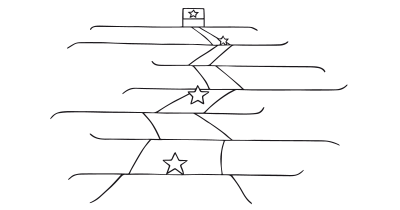
Our motivation increases as we move closer to a goal
Hedonic Adaptation + Rewards
Hedonic adaptation can diminish the impact of rewards over time. Combine it with a variety of reward structures. Offer point systems, badges, and occasional surprise bonuses to keep users engaged. An example could be a gaming platform (using Hedonic Adaptation) awards points for completing tasks. However, it also incorporates weekly bonus challenges with unique rewards, surprising users and keeping them motivated (Rewards).

We resume stable levels of happiness despite major positive or negative events

Use rewards to encourage continuation of wanted behavior
Hedonic Adaptation + Fresh Start Effect
This pattern can reset user perceptions and combat hedonic adaptation by framing new periods (like the start of a week, month, or year) as opportunities for a new beginning. Product designs that incorporate features allowing users to set new goals or start new challenges based on calendar events can reinvigorate user engagement.

We resume stable levels of happiness despite major positive or negative events
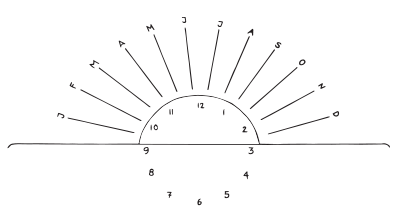
We are more likely to achieve goals set at the start of a new time period
Hedonic Adaptation + Peak-End Rule
Combining hedonic adaptation with the Peak-End Rule involves designing experiences where high points and the final part of the experience are particularly memorable, counteracting the user’s tendency to quickly return to a baseline level of satisfaction. For example, an event app might send a memorable recap or a special thanks message after an event, ensuring users remember it vividly.

We resume stable levels of happiness despite major positive or negative events

We judge an experience by its peak and how it ends
Hedonic Adaptation + Curiosity Effect
Utilizing curiosity can help maintain user interest even as they adapt to product features. By continuously introducing new, unexpected features or hidden elements that users can discover over time, products can keep users engaged for longer periods. An example is an educational platform introducing surprise bonus content after course completion.

We resume stable levels of happiness despite major positive or negative events
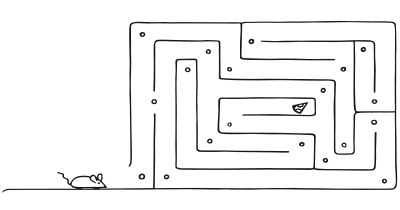
We crave more when teased with a small bit of interesting information
Hedonic Adaptation + Scarcity Bias + Loss Aversion
By creating a perception of scarcity or potential loss, designers can leverage hedonic adaptation to instill urgency and value in continued engagement. This could be implemented in limited-time access to certain features, which prompts users to take advantage of them before they disappear.

We resume stable levels of happiness despite major positive or negative events

We value something more when it is in short supply
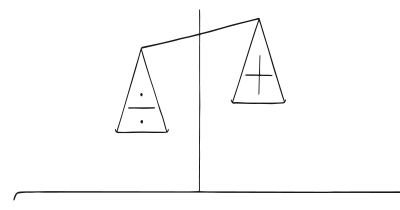
Our fear of losing motivates us more than the prospect of gaining
This persuasive pattern is part of the Persuasive Patterns printed card deck.
The Persuasive Patterns Card Deck is a collection of 60 design patterns driven by psychology, presented in a manner easily referenced and used as a brainstorming tool.
Get your deck!- Hedonic relativism and planning the good society by Brickman
- Enhancing the Television-Viewing Experience Through Commercial Interruptions by Leif & Meyvis
- Hedonic Adaptation
- Brickman, P., & Campbell, D. T. (1971). Hedonic relativism and planning the good society.
- Lucas, R. E. (2000). Socioeconomic status and subjective well-being: The convergence hypothesis. Psychological Bulletin, 126(3), 440-475.
- Diener, E., & Diener, C. (1996). Diener's theory of subjective well-being. Current Directions in Psychological Science, 5(3), 95-100.
- Diener, E., & Lucas, R. E. (2000). Socioeconomic status and subjective well-being: The convergence hypothesis. Psychological Bulletin, 126(3), 440-475.
- Diener, E., Lucas, R. E., & Scollon, C. N. (2006). Beyond the hedonic treadmill: Revising the adaptation theory of well-being. American Psychologist, 61(4), 305-314.
- Lyubomirsky, S. (2011). Hedonic adaptation to positive and negative experiences. In S. Folkman (Ed.), The Oxford Handbook of Stress, Health, and Coping. Oxford University Press.
- Frederick, S., & Loewenstein, G. (1999). Hedonic adaptation. In D. Kahneman, E. Diener, & N. Schwarz (Eds.), Well-being: The foundations of hedonic psychology. Russell Sage Foundation.
- Engen, T. (1991). Color vision. In E. R. Kandel, J. H. Schwartz, & T. M. Jessell (Eds.), Principles of neural science (3rd ed., pp. 483-502). Appleton & Lange.
- Brickman, P., Coates, D., & Janoff-Bulman, R. (1978). Lottery winners and accident victims: Is happiness relative? Journal of Personality and Social Psychology, 36(8), 917-927.
- Gross, J. J. (1998). Antecedent- and response-focused emotion regulation: Divergent consequences for experience, expression, and physiology. Journal of Personality and Social Psychology, 74(6), 1624-1634.
- Helson, H. (1964). Adaptation-level theory. Psychological Review, 71(5), 265-290.
- Festinger, L. A. (1957). A theory of cognitive dissonance. Stanford University Press.
- Leif & Meyvis (2009). Enhancing the Television-Viewing Experience Through Commercial Interruptions, Journal of Consumer Research, Volume 36, Issue 2, Pages 160–172
